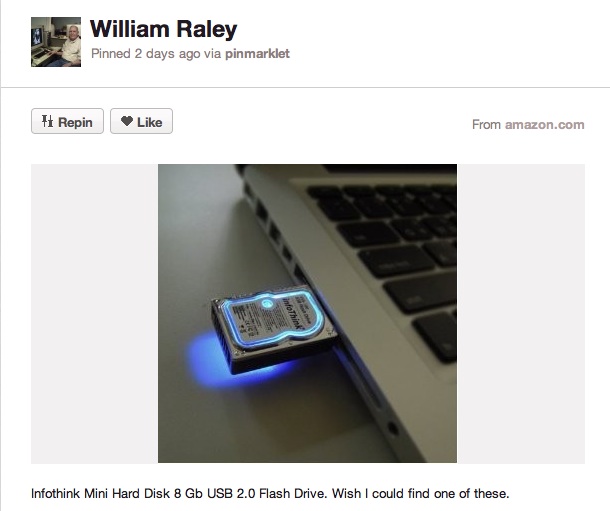Pinterest is likely to be the hottest social media platform for business marketers—next year.
Despite the hype and the record-breaking growth rates, Pinterest is not ready for business marketers; the demographics are wrong, the categories are too consumer focused, and there are significant copyright and measurement issues to overcome.
Still, there is ample evidence as to why Pinterest could be huge for business-to-business marketers. In many ways, Pinterest’s platform has the potential to offer far more value than Facebook and Twitter because of its ability to aggregate and naturally curate content. Here are five areas to watch:
- Traffic – Much has been made about Pinterest’s ability to drive referral traffic more than Google+, YouTube and LinkedIn. Traffic generated from pinning and repinning is important but most likely benefits small businesses(in particular, retailers). For larger organizations, the following areas may offer greater potential.
- Scannability – Business-to-business communication tends to be content heavy. There is a great deal of written content and it keeps expanding. Much like in the consumer world, business decision makers are becoming far more accustomed to searching visually. The Pinterest platform accelerates the process by aggregating and organizing images by category or theme, making it easy to search. For example, we are redesigning a corporate website for a professional services firm. Its “knowledge center” holds a deep repository of data-rich content and is now being reshaped to look like a Pinterest page to make it more inviting and searchable.
- Speed – That’s why it is essential to experiment with Infographics (visit Visual.ly for a starting point). As content becomes more crowded and competitive, audiences typically move faster. The average person reads between 200 to 300 words per minute, but visually it takes only 1/20th of a second to process an image. Mashable’s eye tracking study shows that Pinterest is also changing viewing habits from left to right, to top down the center, improving users’ ability to scan information quickly. Offering a “light visual appetizer” may stop audiences long enough for them to order the full content entrée.
- Natural Content Curation – This provides marketers the opportunity to capture deeper insights into audience consumption habits. For example, business marketers tend to organize content along the “buying process,” which is typically defined by steps in the sales process. Marketers may find that business audiences within Pinterest organize and consume content by categories or by a pinboard defined as “applications,” i.e., how they intend to use the product and not how they will buy it. This insight could help define the real purchase path and key influencers (pinners) along that journey.
- Affinity Data – As Scott Brave, CTO of Baynote, wrote: “Individual pinning choices are interesting, but there is even greater opportunity to analyze segments of people who express an affinity for a product or category in aggregate.” If available, this information could enable marketers to create new segmentation clusters based on common interests, which could help improve messaging and targeting.
“Clustering” could identify brand advocates, key influencers and connectors, local “hot spots” and new ideas for reaching them.
I realize that there are skeptics out there. I may even end up being one, but as we’ve learned with other social media platforms, if you don’t think there is value for the business marketing, there won’t be. Pinterest holds great potential, but that “potential” will only realized by those who seek to define or dare I say, “pin it.”


